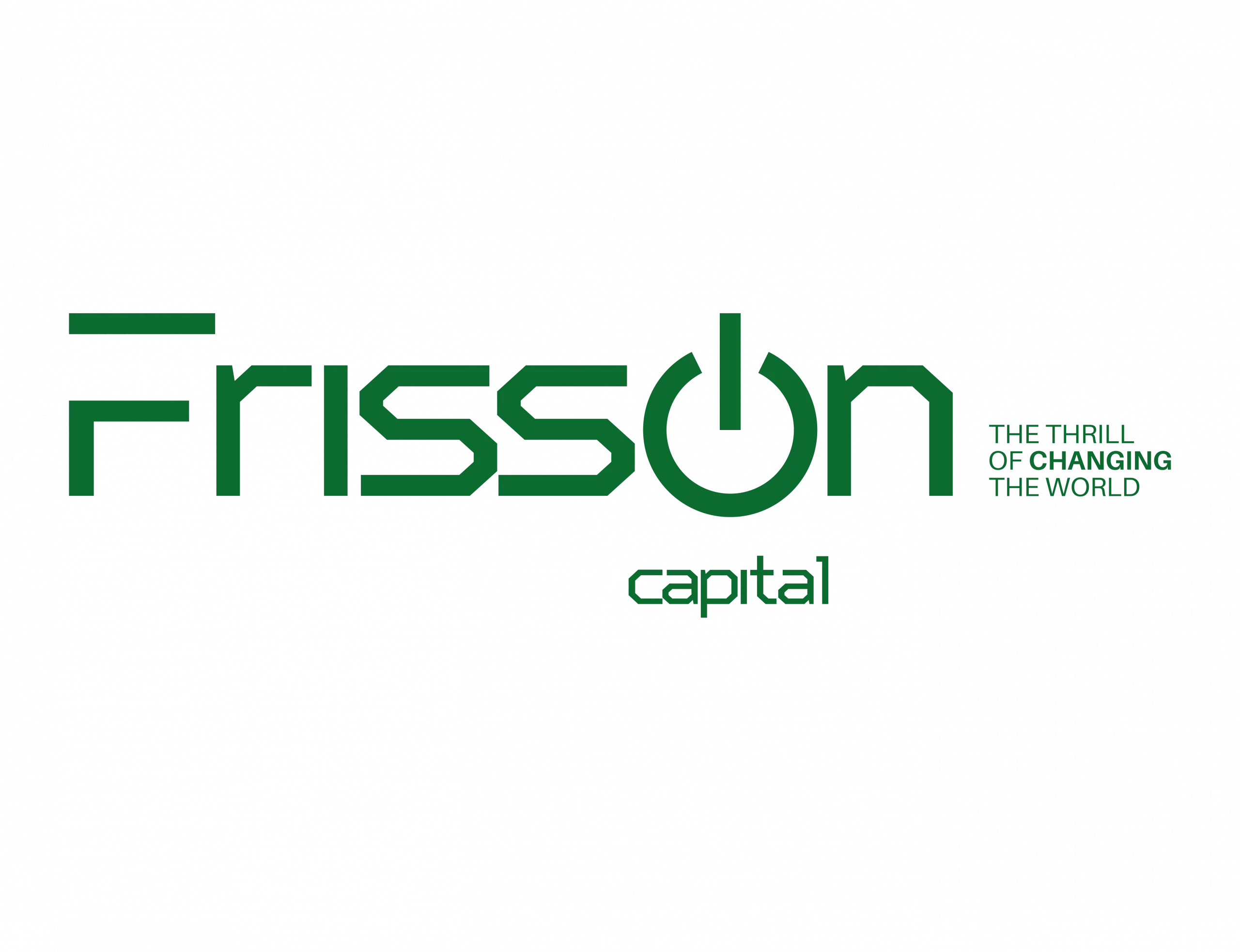As the world moves at an accelerated pace, corporations must be able to innovate at even faster speeds to anticipate market changes. The ideas must be generated and implemented at breakneck speed, and the old model of trying to innovate internally can no longer keep pace.
Increasingly, companies worldwide are facing pressures generated by competition and by economic and social situations at both the local and global levels.
Especially with the changes brought about by the knowledge economy and the Covid-19 pandemic, companies are looking for ways to stay in the marketplace to compete and adapt to societal changes as they emerge. For example, the 2008 financial crisis tested the flexibility and adaptability of many companies by taking advantage of new concepts such as “Lean Startup.” Likewise, during the Covid-19 pandemic, some companies adapted to the circumstances, others grew stronger, and others have had difficulty adapting and evolving.
The key in all cases has been innovation, i.e., launching new products or services as soon as possible through business models prepared to stand the test of time. As the world moves at an accelerated pace, corporations must be able to innovate at even faster speeds to anticipate market changes. The ideas must be generated and implemented at breakneck speed, and the old model of trying to innovate internally can no longer keep pace.
Traditionally, organizations did not worry much about innovation because they could grow or expand on the back of the commercial success of a product. Unfortunately, this is no longer the case; we are in the age of disruption where, as StartUps thrive with the latest in technology and talent, established corporations must adjust their business models.
Well-established corporations can get stuck, not paying attention and not worrying about continuing to evolve. Instead of striving to stay ahead of the curve, they focus on creating new iterations of existing products. The problem with this approach is that they are left vulnerable to disruption where lean StartUps with a modern perspective can quickly change an industry.
Since 2000, 52% of Fortune 500 companies filed for bankruptcy, were acquired, or ceased to exist altogether. Even the largest corporations are not immune to the threat of digital disruption, as seen when Uber and Airbnb irrevocably transformed the cab and hotel industries, respectively.
A New Culture
For corporations to remain competitive, they must adopt a culture that embraces new technologies and actively seek ways to improve their business model. With a proactive attitude toward corporate innovation, companies can remain agile in the face of increasing competition and can even identify new opportunities before any StartUp has a chance to establish itself in the market.
In this explosion of corporate innovation, the focus is on motivating workers to think outside the box and leverage new business momentum. According to Harvard Business Research, the number of corporate investments in StartUps tripled from 980 in 2013 to 2,795 in 2018, whose total value grew from $19 billion to $180 billion. In addition, a Plug and Play Tech Center study found that most corporations have an innovation team of about 20 people responsible for designing proofs-of-concept (POCs) and running pilot programs across the enterprise.
Three examples of corporate innovation that emerged in 2020 and drove evolution in modern industry are Procter & Gamble (P&G), Johnson & Johnson (J&J), and Nike.
P&G wanted to build relationships with StartUps that needed help designing physical products, offering their expertise and financial power in exchange for help optimizing the corporation’s engineering workflow. MassChallenge, a global StartUp accelerator, collaborated with P&G to host the first Fortune 100 demo day, where 8 StartUps presented to 20 senior executives from P&G’s global team.
J&J developed four innovation centers to fund early-stage life sciences research and accelerate new product production cycles. For example, in sports, Nike and TechStars combined forces for a three-month accelerator program to mentor ten StartUp companies. With a $20,000 investment from TechStars, the companies created technologies for activity tracking devices.
But these are not the only examples, and there are even many types of StartUps that are not necessarily affiliated with any particular corporation. For example, Entrepreneur First, creator of Magic Pony; Antai Venture Builder, from Barcelona, which created Glovo; and Blenheim Chalcot, creator of SalaryFinance. Axa backs Kamet Ventures, a builder of healthcare and insurance companies; Team8, in Israel, has the backing of Walmart, Airbus, Softbank, and Moody’s. Others, such as BCG DV, Rainmaking, and Founders Factory, build companies for a range of corporate clients.
Large corporates like StartUp creators because it seems to be less risky than standard venture capital investment, plus it has more leverage in the business being built. All while still taking advantage of some of the agility and pixie dust of the StartUp world.
How to Innovate
Indeed the word “innovation” may refer to many people to technology StartUps with high capitalization values and well-defined corporate innovation approaches. But corporate innovation is not only typical of such companies; it should be understood as a tool that generates value, profits, and competitive advantage in the long term. It is a process by which a company experiments with modern technology, strategies, and opportunities to make its existing business model more competitive in today’s market.
This innovation can generate one of the following effects within companies:
- Incremental: The company continues with the business model while trying to add value through continuous improvements to existing products or services (new models, expansion of services/benefits, etc.).
- Disruptive: The company starts to displace existing ones by launching disruptive products or services like Amazon in online commerce or Whatsapp in text/picture messaging.
- Breakthrough: Represents a technological or scientific paradigm shift, as could be, at the time, the use of transistors instead of bulbs.
There are different ways in which corporations can innovate. These are some of them:
Research and development: It is basic for a company that seeks to sustain incremental innovation in its products and/or services and processes, as is the case of automakers, dairy companies, television companies, etc.
Partnerships and innovation labs: A common obstacle to corporate innovation is the lack of crucial infrastructure to support new business. Partnering or creating an innovation lab facilitates the development of new and impactful ideas. Through them, incremental and sometimes disruptive innovation seeks to permeate the products and/or services, business models, and processes of the organizations. Some companies that have used this process are Kohl’s Innovation Center, Verizon 5G Labs, and Google[X], to name a few.
Accelerators: Many entrepreneurs hesitate to take the plunge even if they have a great idea. When a corporation supports the creativity of its workforce, it develops a platform to give the entrepreneur quick access to resources, expertise, and connections to help develop a concept. A corporation can use an accelerator program to go beyond an initial investment by becoming an advisor or co-developer. MassChallenge has partnered with more than 150 corporations over the past decade, helping many leading brands develop a StartUp accelerator program, including General Electric and Southwest Airlines.
Mergers and Acquisitions (M&A): Many companies would like to engage in an innovation process, but sometimes the easiest way is simply to merge with or acquire an established competitor. In this way, the corporation nullifies the threat of competition and opens up new avenues for growth. By merging with a small StartUp, the company can reach new markets and appropriate intellectual property rights. An example is Facebook, which, to continue its growth and the generation of value to its investors, has acquired companies such as WhatsApp, Instagram, and Oculus VR.
Intrapreneurship: This program is similar to an accelerator. The company gives employees the platform and support to work on their innovations. The result can lead to new products for the company, or it can be the launchpad for new entrepreneurs to launch a separate company. One example is the British insurance company Aviva, which runs this type of corporate innovation program with great success.
Several companies follow this model: they generally identify a problem to be solved, contribute resources and hire an entrepreneur to lead the initiative.
Open innovation: When internal talent is unavailable, the corporation seeks external talent. This is accomplished through events where a large corporation invites startups to come and work in its physical locations, offering them funding, support, and technology. By collaborating with emerging talent, corporate leaders have the opportunity to learn about emerging technologies directly from StartUps, which helps accelerate innovation cycles. Plus many StartUps partnerships produce new products and often result in partnerships or go-to-market acquisitions.
The Best Way to Innovate
A business acceleration system is currently gaining momentum that combines the talent of entrepreneurs with the communication and investment channels of large corporations. It is known as ‘Corporate Venture Building’ (CVB), a StartUp accelerator model that supports the creation of a StartUp dedicated to the technology, environmental or R&D industry, thanks to the joint work and mentoring of a large corporation.
Today, building CVB companies is becoming an increasingly important strategy for corporations to stay ahead of the curve, capitalize on innovation and deliver financial returns to shareholders. The CVB is a catalyst for strategically aligned and targeted new product and business innovation, which increases the corporation’s opportunity to capitalize on its next wave of growth.
CVB enables corporations to build an innovation engine with all the speed, flexibility, and agility of a StartUp but with the backing and resources. With the corporation’s assets, connections, and experts backing the corporate enterprise’s efforts, good ideas go farther, faster.
The CVB is when a corporation founds a separate and independent entity to function as an external center for innovation, thereby avoiding corporate bureaucracy while remaining closely aligned with the company’s strategic imperatives. For example, Studio X, which seeks to transform the world of work in the energy industry, was one of Shell’s first forays into establishing an external corporate venture builder to create innovative products based on exploration.
Corporate Venture Building is the symbiosis between entrepreneurs/intra-entrepreneurs and corporations. It brings together the talent of entrepreneurs with their enthusiasm to build, intra-entrepreneurs with their willingness to break the rules while still knowing the mother ship well, and the corporate entity itself with the resources that a regular StartUp would never have access to.
What Are the Benefits?
The connection between CVBs and the corporations that founded them can be hugely beneficial when the companies themselves become the CVBs’ first customers. While a normal StartUp often struggles to get customers at first, a CVB can have a huge network of customers on hand by leveraging their corporation’s connections, providing them with instant exposure, revenue, and a reputation boost.
Perhaps the best example of what a CVB-created product represents is the Qantas airline which launched a health insurance company. In Australia, Qantas miles are practically their currency; people are passionate about accumulating them. Customers who actively logged their steps, could earn additional miles with Qantas health insurance and filled the insurance company with new business. It also gave the insurer a healthier pool of insured people, and of course, those miles translated into more flights on Qantas Airways.
Perhaps the greatest advantage of the Corporate Venture Building model is that it allows large corporations to cover their innovation needs to remain competitive in the market. This has been validated by companies such as Carrefour or Grupo Hotusa, in Spain, which has managed to take advantage of opportunities, conquering new international markets in other countries by implementing this acceleration system of business projects that are starting up.
But there are also benefits for entrepreneurs. It significantly reduces the risk of a new company in the world of technology, having the support of an expert team by the company with which it will develop a business project and the mentoring of professionals.
To highlight the benefits this business model cooperation and investment could have for large companies, experts point out that currently, 68 of the Forbes Global 500 companies work with StartUps.
Another interesting factor is that CVBs do not only partner with large corporations; medium-sized companies with a good profit margin can start their CVB. Then, it’s just a matter of looking for adjacent areas in the market where the connections, resources and knowledge the company already has would be useful to create new products or services. Then, a team of entrepreneurs and people within the company is assembled to create an innovation studio of their own.
“An entrepreneur incentivized by high risks and high rewards is one aspect of creating a great new startup,” says Stefan Gross-Selbeck, global managing partner at BCG Digital Ventures, an early pioneer in Europe. “But it’s only one aspect. You also need a great idea, a strong team, great execution, and access to funding. These are all aspects that venture builders can professionalize,” he says. However, he asserts, “Our success rate is several times better than venture capital; venture capital fails a lot and, as an asset class, it doesn’t fit well with corporate investment.”
The CVB does not necessarily create more unicorns, says Michael Niddam, co-founder and CEO of Kamet Ventures, but it does minimize the risk of company failure. A very high number of the StartUps that come out of company builders are still alive, and Selbeck, for his part, says that the 150 companies created by his team have a survival rate of about 90%.
For Your Consideration
Corporate Venture Building is one of the most popular tools in the corporate innovation community. With more than one in five Fortune500 companies actively participating in it, it seems to be here to stay. It is the culmination of a generation of corporate innovators pondering how to escape what Clayton M. Christensen calls the innovator’s dilemma.
There are many examples of companies that have had success with the CVB globally, and although every CVB is different, considerations need to be taken into account.
- One of the differences between CVBs and typical StartUps is that corporations already have a plan and a strategy, so a CVB must clearly understand what that strategy means for the venture to have clear options to communicate to teams.
- Think about what assets the organization has that could be relevant in the context of the strategy. This may represent potential advantages, including technology, intellectual property, relationships, etc. After deciding which assets to leverage, it is essential to define how they will be made available.
- Since Corporate Venture Building is about creating new companies, they will naturally be located outside the existing corporation. However, how close or far away they are can make a big difference. How close they are to the existing organization can determine how well the corporate assets are used and how independent they can be.
- The key is to define whether to work with existing teams or with external talent. Both options have distinct advantages and disadvantages, which must be weighed carefully. Allowing existing staff to join the risk team will ensure familiarity with the organization. Recruiting external entrepreneurs who have prior experience can help avoid potential StartUp mistakes. However, they are unfamiliar with the organization and generally do not want to work for a corporation. Therefore, cultural conflicts can quickly arise and must be managed.
- In the life of a typical startup, successful entrepreneurs go on to raise multiple rounds of funding, scale the company and finally exit with, for example, an initial public offering. It’s a long and rocky road, but it’s relatively clear what success means. In that sense, a corporate venture has more potential success scenarios, and from the outset, it must.
Bottom line: To be successful, corporations have to make some critical decisions upfront. They need to:
- Decide how the current corporate strategy will influence the venture creation strategy.
- Determine what assets venture creators can leverage and how.
- Structure the relationship of ventures to the existing organization;
- Define where to look for talent.
What scenario do you want to play out?
Investing in a CVB could lead to an explosive wave of growth, disruptive industry innovation, and a rapid introduction to a new market. But, this is just the beginning: to learn more about the CVB, visit https://hackx.space.








